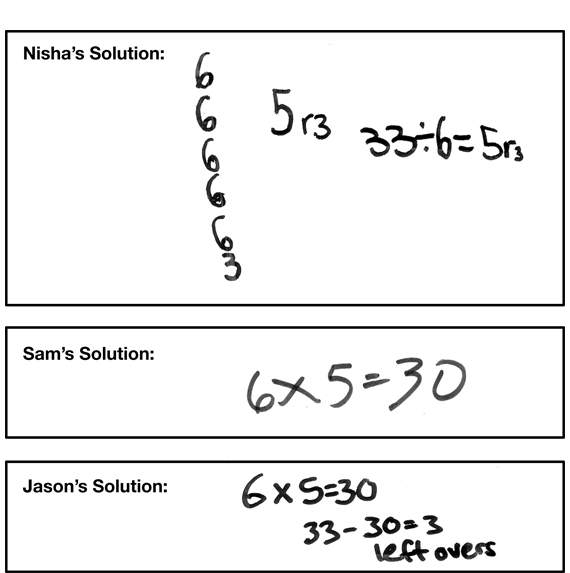Birthday Party
Est. Class Sessions: 2Summarizing the Lesson
Use a display of the Ice Cube Problem Master to pose the problem below. Cover the sample solutions.
Ask:
Before students begin their work refer them to the Math Practices page in the Reference section of the Student Guide. Ask students to read Math Practice Expectations 2, 5, and 6. Explain that they should think about these Expectations as they are working on their solutions.
Ask:
Tell students that their explanations should be clear, but that they do not need to be lengthy.
Ask students to work in pairs to solve the problem and then show or tell their solution path.
After students have solved the problem themselves, show the questions and sample student work on the display. These solutions are in Figure 3. Ask students to discuss them with their partners using the Math Practices page and questions on the display. When students have had enough time to consider each solution, discuss the questions as a class. Use Sample Dialog 2 as a guide for this discussion.
Have students share their solutions with the class. Use prompts similar to those in the Sample Dialog. Encourage students to ask clarifying questions of one another. If students use number sentences, ask them to explain what each symbol means.














